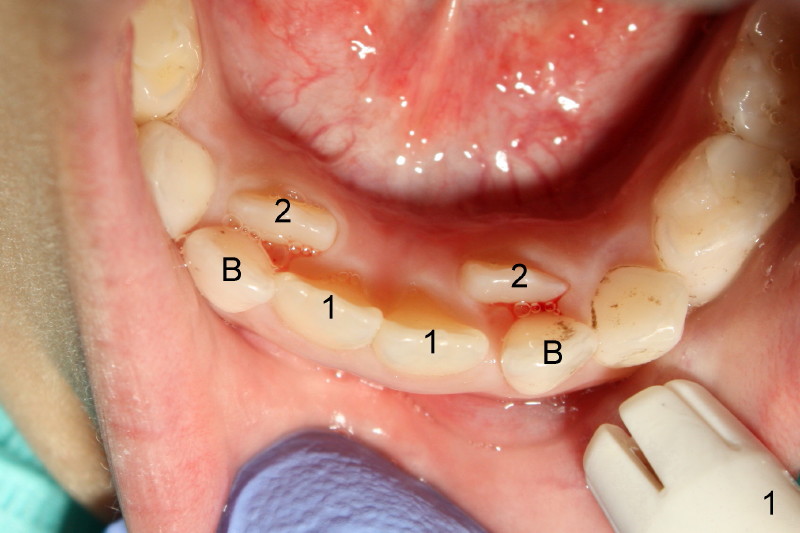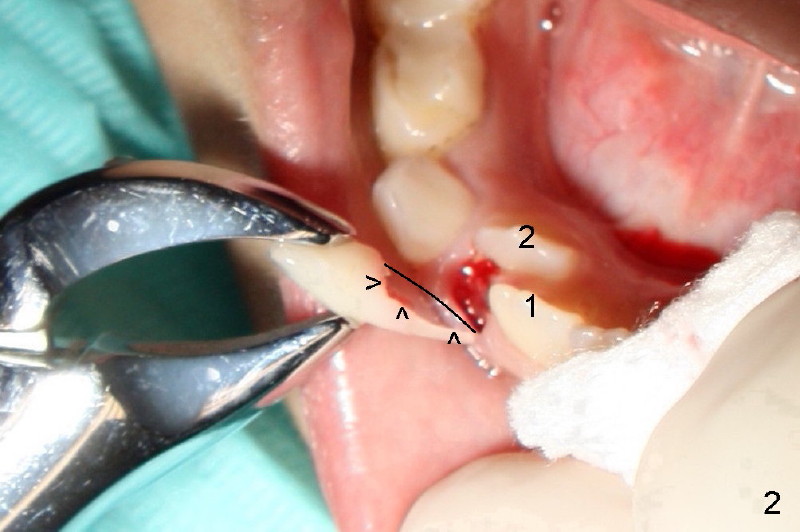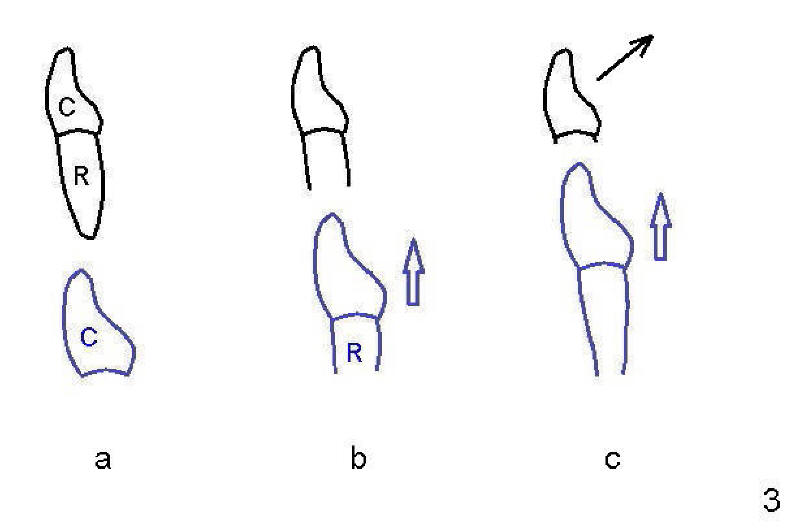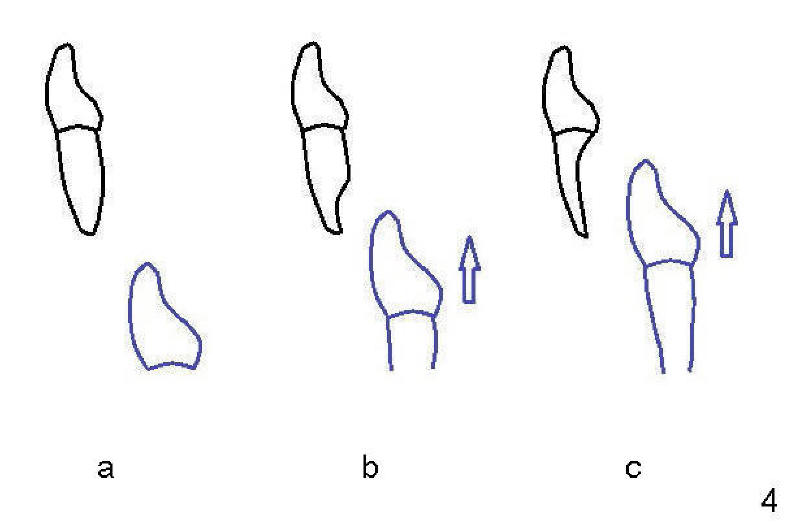



 |
 |
 |
 |
Why Some Baby Teeth Stay?
In last lecture, we discuss that when our jaw do not develop in time, adult teeth erupt in wrong place. The baby teeth do not fall out by themselves.
Today we discuss why. Tim is 7 years old. Two of baby lateral incisors are still quite stable (Fig.1: B), while the adult lateral incisors (2) that are supposed to replace them come out behind. There are at present not enough spaces for adult lateral incisors to move into positions that are occupied by the baby lateral incisors. Fig.1: #1 stands for adult central incisor.
When the baby tooth is being extracted, the back part of the root is gone (Fig.2: arrowheads and black line). The front portion of the root remains. This explains why the baby tooth refuses to surrender when the adult tooth comes out.
When our child jaws develop normally (with a lot of spaces between baby teeth), an adult tooth (Fig.3a: blue) is forming immediately below the root (R) of the baby tooth (black). The crown of any given tooth forms first, followed by the root. When the root of the adult tooth is forming (blue R in Fig.3b), the adult tooth is moving upward (arrow) and placing a lot of pressure against the root of the baby tooth, causing the latter to be gone (resorbed) partially (shorter than the root in Fig.3a). As the root of the adult tooth grows more (Fig.3c) and the adult tooth moves up more, the root of the baby tooth becomes shorter and shorter and is eventually gone. The baby tooth finally finishes its destiny (falling out without root, black arrow).
By contrast, when child jaws develop slowly (with no spaces between baby teeth), the developing adult tooth (crown) is located behind the baby tooth (Fig.4a). As the adult tooth moves upward (Fig.4b,c), only the back portion of the baby tooth's root is being eaten (resorbed). The baby tooth may be stable because of remaining root in the front part when the adult tooth has started to come into daylight.
Return to Child Dental Care
Xin Wei, DDS, PhD, MS 1st edition 11/01/2011, last revision 07/17/2016